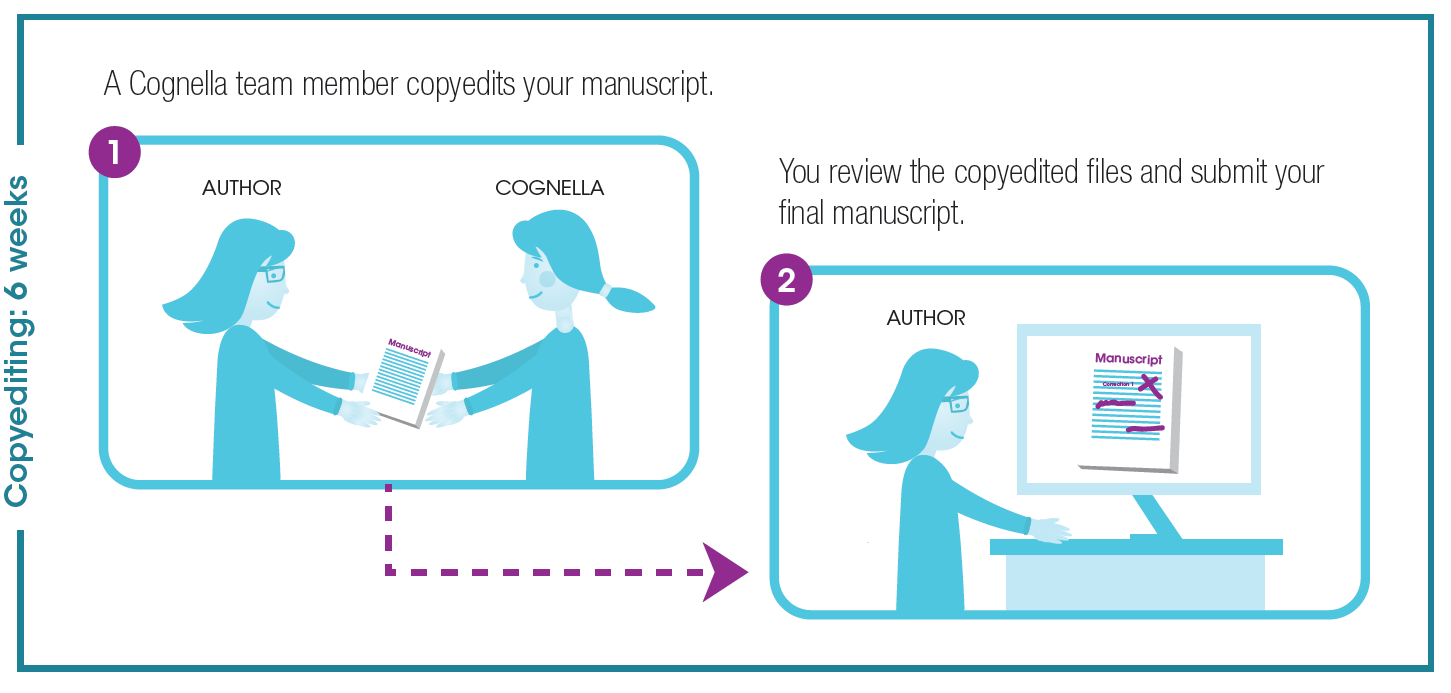Copyediting Phase

During this phase, our team copyedits any original materials you’ve submitted. Depending on the makeup of your book, this could mean copyediting only pedagogical elements and interstitial matter, or it could mean copyediting your full manuscript. Additionally, third-party content will be proofread for spelling and punctuation; however, previously published text cannot be further copyedited or changed.
Our team will apply edits to your manuscript in Microsoft Word using the Track Changes feature for easy review. Depending on your book type, we’ll adhere to either Chicago Manual of Style or APA Style. If you’re unclear of the style that will be used for your book, or if you’d like to request a particular style be used, consult your editor.
Light Copyediting
We will lightly copyedit your book, focusing on grammatical issues such as subject/verb agreement, syntax, punctuation, etc. Citations within your manuscript will be checked for consistency according to the style selected for the manuscript (CMOS, APA, etc.). You will be responsible for providing any missing information found within citations by your copyeditor. We do not typically fact check or make substantial text changes as we do not want to impede your voice.
Substantive Copyediting
If you believe your manuscript will require in-depth editing, let your editor know.
Copyediting Approval
Once copyediting is complete, we may ask you to review the edits before we commence layout and design. We request you review the document, accept or reject changes, and respond to any questions or comments from the copyeditor directly within the manuscript.
As the author, you have the ultimate say as to which edits are applied. While our copyeditors have years of professional experience and will only propose changes intended to improve your work, their markups should only be viewed as suggestions.
In addition to reviewing suggested copyedits, this is the stage at which rewrites or the addition or removal of large amounts of text should occur to finalize your manuscript as much as possible. In later stages of production, you will be asked to proof your manuscript, but changes should be minimal at that time—minor type corrections, moving images closer to text references, etc. A copyeditor will not be available to review any new text that you add to your manuscript during the proofing phase. The copyediting phase is the only stage during which dedicated copyediting is offered, so be sure to make any and all substantial changes at this time.
If you choose to add or remove text beyond the dedicated copyediting stage, only your production editor will review the changes, so please be particularly careful with these types of changes. Beyond the dedicated copyediting stage, the addition or adjustment of copy within your manuscript could result in common errors (including the insertion of incorrect information from misread Tracked Changes, duplicate punctuation, etc.).
When you’ve approved copyedits and finalized your text as much as possible, your production editor will explain our preferred naming conventions for your manuscript files. Once labeled properly, email the documents to your production editor. Your manuscript will be sent to our design and layout team as soon as it’s received.


